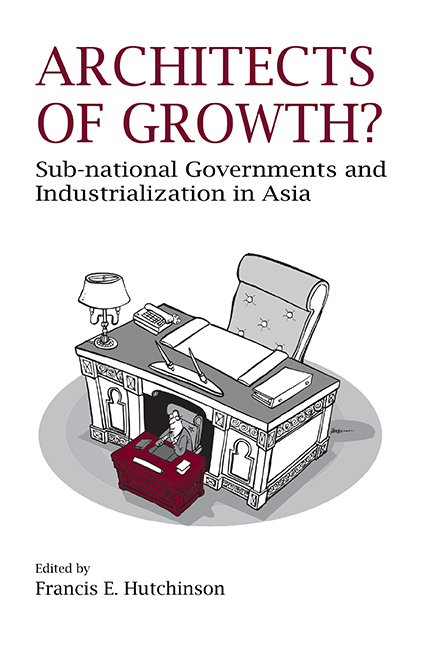Book contents
- Frontmatter
- Contents
- List of Tables
- List of Figures
- Foreword
- Preface and Acknowledgements
- Contributors
- Abbreviations
- I Introduction and Industry Overview
- II Cases from Industrializing Southeast Asia
- III Cases from China and India
- IV Cases from Industrialized Countries
- V Conclusion
- 13 Sub-national Governments and Industrialization: Some Conclusions
- Index
13 - Sub-national Governments and Industrialization: Some Conclusions
from V - Conclusion
Published online by Cambridge University Press: 21 October 2015
- Frontmatter
- Contents
- List of Tables
- List of Figures
- Foreword
- Preface and Acknowledgements
- Contributors
- Abbreviations
- I Introduction and Industry Overview
- II Cases from Industrializing Southeast Asia
- III Cases from China and India
- IV Cases from Industrialized Countries
- V Conclusion
- 13 Sub-national Governments and Industrialization: Some Conclusions
- Index
Summary
Introduction
The previous chapters have contained numerous examples of dynamism, entrepreneurship, and policy innovation from state and provincial governments in Asia and beyond. Referring to the central question of whether sub-national governments can be “architects of growth” — to the extent that they design and implement policies to address needs regarding their industrial sectors — the answer is “yes”.
However, given their subordinate position vis-á-vis their national counterparts, sub-national governments never assume this role under circumstances of their own choosing. Furthermore, even if there is political will to prioritize industrialization, their restricted range of responsibilities and limited financial wherewithal — as well as the nature of their entry into the electronics sector — may preclude effective outcomes.
Consequently, the questions that then arise are: when do sub-national governments take on the role of “architects”; to what extent can they become the prime drivers of industrialization; and which of the strategies and policy measures that are available to them are productive and under what conditions?
In order to shed light on these questions, this chapter will draw out common themes and conclusions from the ten cases. This will be done in five parts.
The first section will analyse the “birth” of the electronics sector in the various cases. New industries emerge in a given location for a range of reasons, of which government initiative is but one. Subsequently, once an industry is mature, traded and untraded externalities favour established centres, making it harder to establish agency on the part of the sub-national government concerned. Thus, the moment when an industry first emerges in a given location offers a unique opportunity to evaluate whether the respective state or provincial government was aware of its existence and/or involved in its emergence.
The subsequent two sections will explore how the respective subnational governments supported the development of their electronics sectors following their emergence and consolidation. This will be done along two axes — vertical and horizontal.
As regards vertical dynamics, this includes: how the various subnational governments were affected by the governance structure within which they had to operate; the extent to which centrally-pursued regional policy worked in their favour; and the manner in which state and provincial leaders managed relations with the centre to secure resources and pursue their own aims.
- Type
- Chapter
- Information
- Architects of Growth?Sub-national Governments and Industrialization in Asia, pp. 357 - 383Publisher: ISEAS–Yusof Ishak InstitutePrint publication year: 2013

